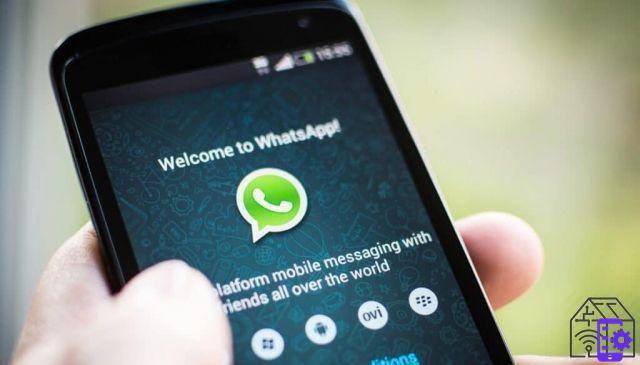
Once again, the column "How has it changed" leads us to discover the story of one of the technological protagonists of our daily life. Who are we talking about? Clearly of WhatsApp, the messaging service that allows us to stay in touch with friends, family and work colleagues 24 hours a day. An application we all know how to use, but whose origin and evolution perhaps we ignore. Although recent, in fact, the history of the platform has proved to be full of twists. Let's go and find out more about the history of WhatsApp.
WhatsApp, the origin of the best known messaging app in the world
The story of WhatsApp begins in February 2009, when Jan Koum e Brian Acton - former Yahoo employees - present the first version of the messaging app. Although imperfect, it met perfectly the goal of its founders, namely that of creating a tool that would allow people to communicate in a practical and fast way. The idea of Koum and Acton, in fact, was to focus exclusively on communication, eliminating games, advertisements and any other source of distraction from the App. Thus was born WhatsApp, initially released on the App Store and then made available also for Android, BlackBerry OS and Windows Phone.

As you can well imagine, we are talking about the dawn of the platform, when this could be used by users only by subscribing an annual subscription of 89 cents. A rule from which iOS users were excluded, who could take advantage of the App by paying the one-time subscription. Probably, many of you do not even remember that WhatsApp was paid, yet this regulation remained in place at least until 2016, when then the platform became de facto free for all. Yet, despite the need for a subscription, the application achieved incredible success right from its launch, so much so that it reached i 400 million monthly active users in just 5 years. A record mainly due to the evolution of the App.
The evolution of WhatsApp: how the App has changed over the years
One of the questions we asked ourselves before starting to write this article was "Has WhatsApp really changed over the years?". Definitely yes. While it has remained faithful to the original idea of Koum and Acton, the platform has been enriched with numerous features over the years. In June 2010, for example, WhatsApp launched one of the most revolutionary options in its history: the location sharing. A function that other platforms lacked, and which thus allowed the user to share his GPS location with his direct interlocutor.
And this was only the beginning of the evolution of the application. In fact, in 2011 the group chat. And in 2013 it was the turn of the voice messages, a feature already seen on Facebook Messenger, where users had the ability to record an audio clip and send it to a friend in place of a text message. In the space of 4/5 years, therefore, the platform conceived by former Yahoo employees had been completely revolutionized, so as to attract not only the attention of millions of users around the world, but also that of Facebook, which was immediately demonstrated willingness to acquire it.
The acquisition by Facebook and the primacy of the App globally
In 2014, just five years after its foundation, Facebook announced the acquisition of WhatsApp for ben 19.3 billion dollars. A decision that the users did not like at all, who immediately migrated to other messaging services such as Telegram and Line - a recurring behavior in the history of WhatsApp -. Yet despite these movements, as of August 2014 it was still the messaging application most widespread in the world, with more than 600 million active users every month. A remarkable success, in a rather difficult year for the platform. Also in 2014, in fact, the App introduced for the first time the option of blue check, letting users know if their interlocutor had read the message or not. A small threat to privacy, masked by the ability to disable the feature.

But the history of WhatsApp is still very long and eventful. In 2015, the platform launched its first web version, allowing users to use the service directly from the desktop. In the same year, then, WhatsApp launched the beta of the new function of the video call, made available to users just a year later. On the other hand, 2016 also proved to be a fundamental moment for the platform. For the first time, after a long work by the company's engineers, the App introduced the end-to-end encryption. A protection system that makes messages - text and multimedia - visible only to the sender and recipient of the same. An important detail, which will become the distinctive feature of the application.
And let's go further, because the evolution of this platform has truly given us - and will reserve us - incredible surprises. In 2018, after the App exceeds one and a half billion users, it arrives on the market WhatsApp Business, a version of the service dedicated exclusively to private companies and organizations. In this way, Facebook still maintains the original idea of a practical and fast communication tool unchanged, but this time it declines it in a different key. WhatsApp thus becomes a means to connect customers and companies. A direct link between user and brand, which further expands the potential of the service.
What will the future of the platform be?
Although it is not too long, the history of WhatsApp is really full of news of all kinds. Month after month, year after year, the platform has grown trying to satisfy users' needs as much as possible. The numerous audio and video features recently introduced, for example, perfectly meet the needs of ever faster communication. But not all that glitters is gold. WhatsApp also had its dark times. In the summer of 2018, the platform is accused of being directly responsible for a series of bad incidents in India. The spread of fake news through the application would have led to dozens of people to death, so as to convince the company to take the right measures for the safety of users.
It was on this occasion that the App decided to restrict forwarding of a message to a maximum of five people. A rule that was then extended globally in conjunction with the onset of the pandemic, when WhatsApp began to be used to circulate false and biased news about Covid-19, its symptoms and even its cure. In short, like the most used social networks, the App also has some difficulties with disinformation. But user safety has always been a priority for the company. And the long-lived history of WhatsApp proves it perfectly.
Discount 2022 Apple iPhone SE (128GB) - Midnight (3rd Generation)
2022 Apple iPhone SE (128GB) - Midnight (3rd Generation)
- 4,7 "Retina HD display
- Advanced single camera system with 12MP wide angle; Smart HDR 4, Photo styles, Portrait and video modes ...
- 7MP FaceTime HD camera with Smart HDR 4, Photo Styles, Portrait mode and 1080p video recording
 Apple iPhone 12 (256GB) - nero
Apple iPhone 12 (256GB) - nero
- 6,1 "Super Retina XDR display
- Ceramic Shield, harder than any smartphone glass
- 5G for lightning-fast downloads and high-quality streaming


























